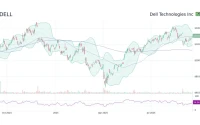The performance began, as so many do in this market, with the promise of effortless altitude. A group of `pump.fun streaming` personalities—SolJakey, Never Goon, MiniKon, and OG Shoots—appeared to be in a private jet when disaster struck. The cabin shook, alarms blared, and the feed cut out, implying a crash. It was a classic cliffhanger, designed to generate frantic speculation and, by extension, attention.
The speculation that followed, however, was not of the intended variety. Within hours, the entire production was forensically dismantled by users on the social media platform X. The shoddy flooring of the "jet" was the first tell. Then came the images of the set's exterior, which matched perfectly with the "Olympic 4" private jet mock-up at FD Photo Studio in Los Angeles. The cost to rent this facsimile of wealth and success, the very stage for this high-stakes drama, is $34.99 per hour.
A stunt so transparently false, so cheaply executed, would be easy to dismiss as a simple miscalculation. But it’s more useful to view it as a data point. This event does not exist in a vacuum. It is a lagging indicator, a piece of qualitative data that reflects a much starker, quantitative reality. It’s what happens when the pressure to maintain a narrative of parabolic growth collides with the gravitational pull of deteriorating fundamentals. The desperation was not faked.
When the Performance Becomes a Sell Signal
The Discrepancy Between Signal and Noise
To understand the $34.99 crash, one must first look away from the video feed and toward the terminal data. The performance of the `pump.fun token` itself provides the necessary context. In the 12-day period leading up to this event, the market capitalization of the `pump fun` ecosystem fell from an all-time high of approximately $3 billion to $1.8 billion. That is a 41% decline in value.
This is not an isolated metric. According to data from Dune analytics, the number of daily tokens launched on the platform, its primary measure of user activity, fell from a peak of 30,000 in mid-September to below 20,000 in the last week of the month. Daily revenue followed a similar trajectory, cratering from a high of $2.4 million to less than $1 million by September 24. Trading volume, the lifeblood of any such platform, dropped from $263 million to below the psychologically significant $100 million mark.
And this is the part of the data that I find genuinely puzzling. The percentage of tokens that successfully "graduate" from the platform’s bonding curve to become fully-fledged assets on the `Solana` blockchain has fallen to just 0.53%. I've analyzed dozens of platform models, and a conversion rate this low suggests a fundamental breakdown in the core mechanism. It implies that for every 200 projects launched, 199 fail to achieve even the most basic level of traction. The platform is functioning less as an incubator and more as a furnace.

Faced with these figures, the platform’s management has not been idle. They initiated a significant buyback program (a staggering $114 million allocation) to support the `pump.fun coin` price and introduced a new creator reward system. These are standard tools for stemming a decline. Yet, the persistence of the downward trend across all key metrics suggests these measures are, at present, insufficient. They are an attempt to fix the engine while the wings are on fire.
This is the numerical backdrop against which streamers are setting themselves on fire, erecting golden statues of political figures, and faking their own deaths in budget photo studios. The stunts are an attempt to generate a new signal, to create noise loud enough to drown out the sell orders visible on every `dex screener`.
The problem is that the audience is no longer just watching the performance; they are actively auditing it in real time. The era of information asymmetry, where a small group of promoters could control the narrative, has collapsed. Today, every viewer has access to the same data terminals as the insiders. While SolJakey and his cohort were performing their crash, thousands of users were likely cross-referencing the `pump.fun stream` with live charts, observing the disconnect between the manufactured panic and the real, orderly decline of the associated assets.
The community reaction was not just mockery; it was a rapid, distributed act of due diligence. The shoddy flooring was not just a production error; it was a metaphor for a business model showing cracks under pressure. The discovery of the rental studio’s booking page was the equivalent of a hostile analyst uncovering a critical flaw in a company’s accounting. It revealed the true cost of production, and it was cheap.
The fake crash, then, was not the story. The real story is the platform’s struggle against a market that has grown too efficient, too skeptical, and too data-literate to be swayed by cheap theatrics. The more frantic the stunts become, the more they signal that the underlying value proposition is failing. It is a feedback loop where the marketing itself becomes a sell signal. The performance is no longer convincing because the numbers are telling a more compelling story.
A Performance Audit
In the end, the market is a relentless arbiter of value. No amount of performative spectacle can indefinitely prop up an asset when its core metrics are in freefall. The most telling detail of the entire affair was not the fake crash itself, but the fact that it was staged in a set that costs about as much as two pizzas. It's a precise, almost poetic, valuation of the narrative they were attempting to sell.
Reference article source:









